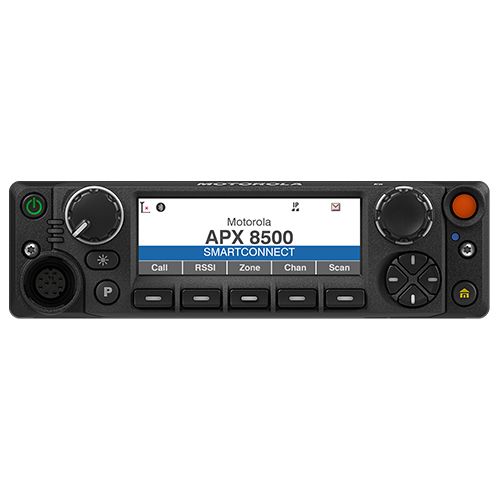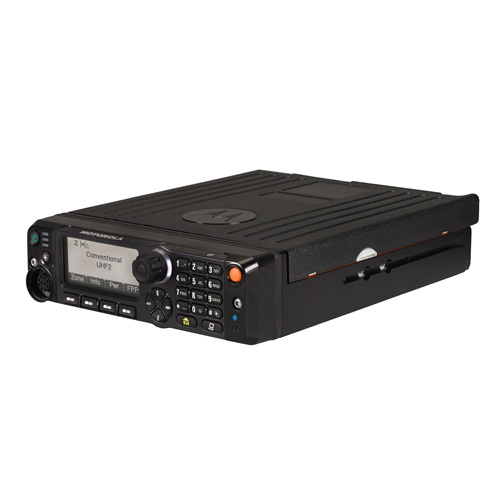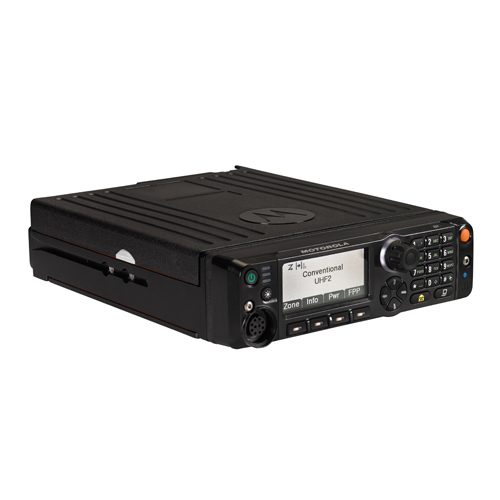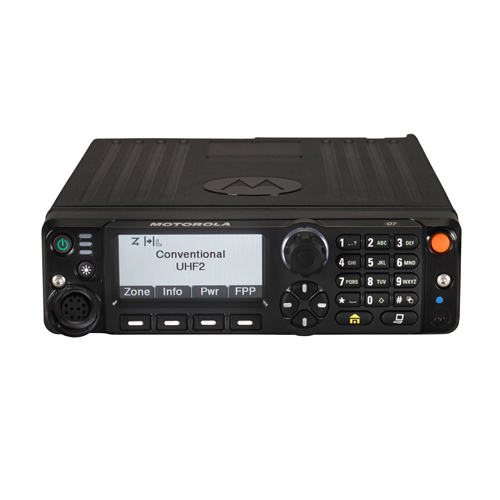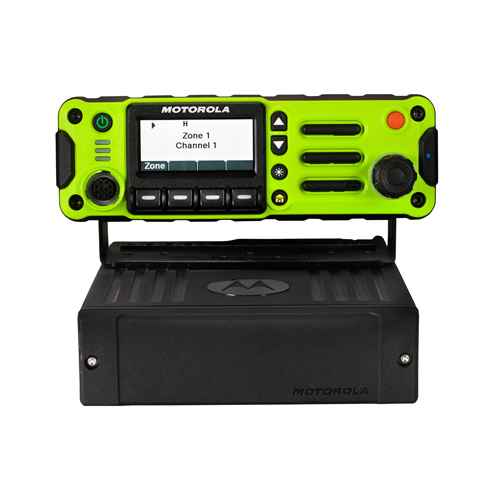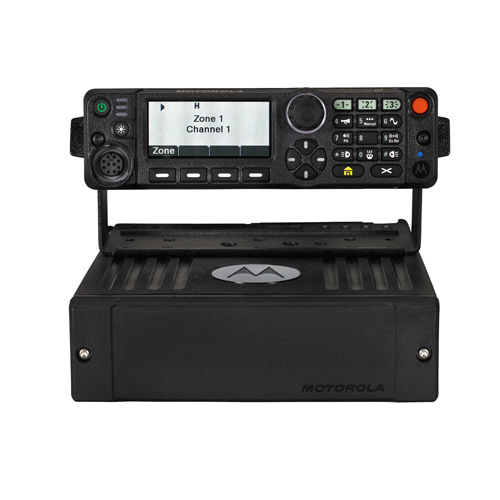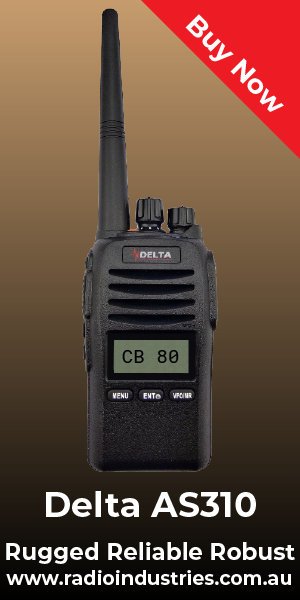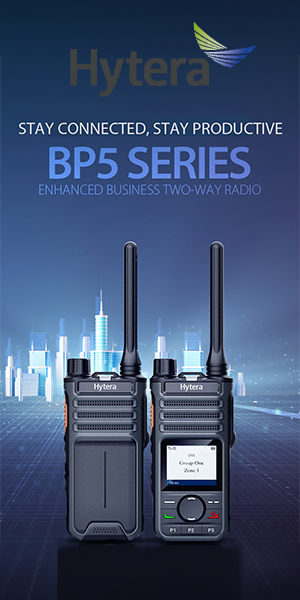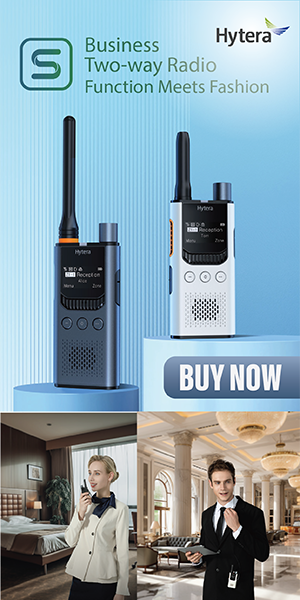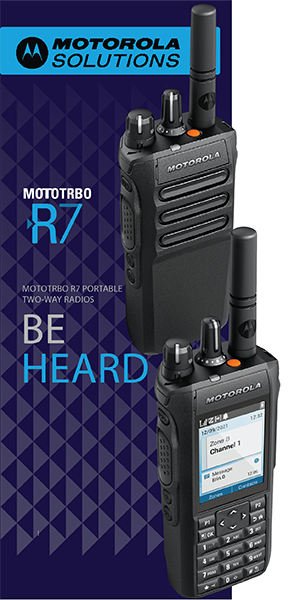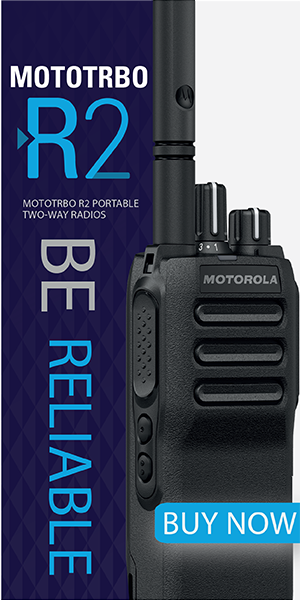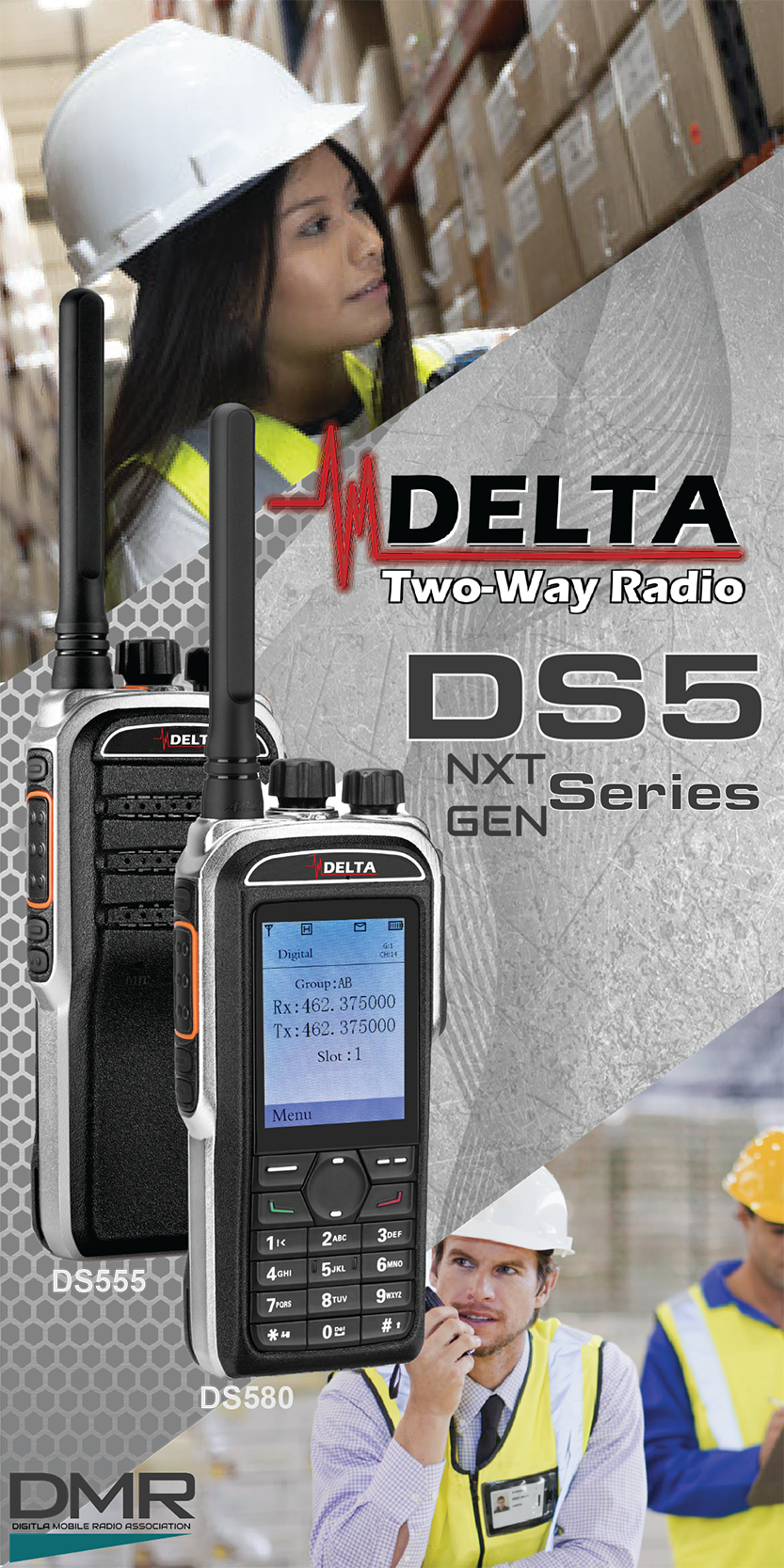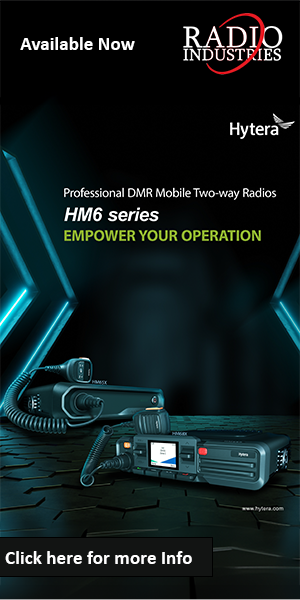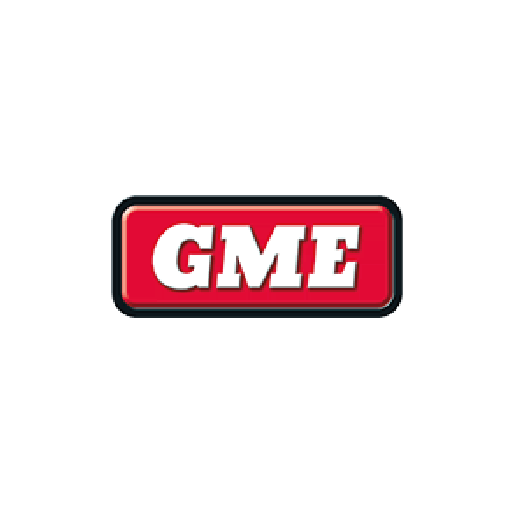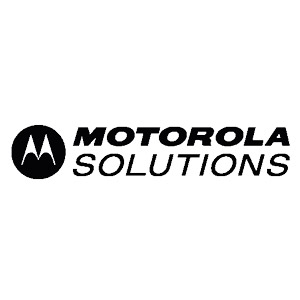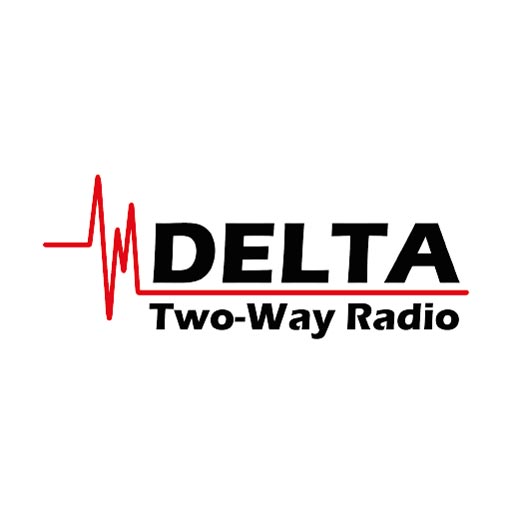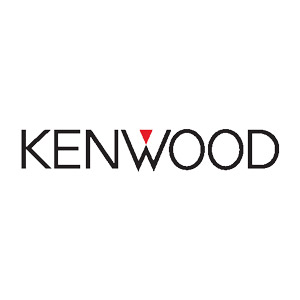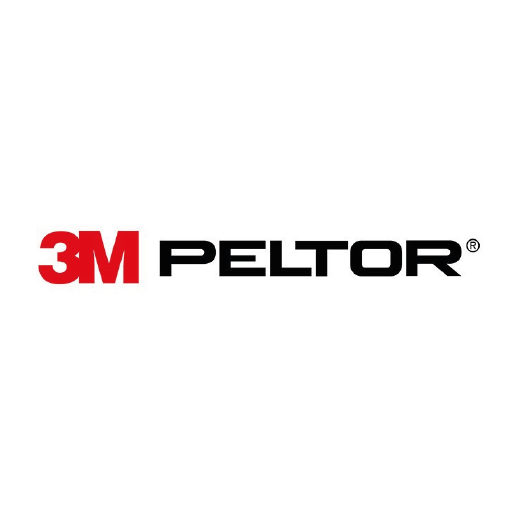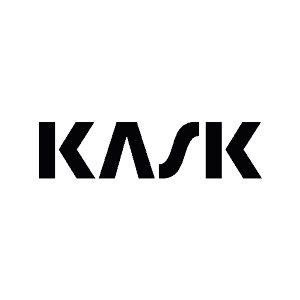Motorola APX8500 Two-Way Radio
The Motorola APX8500 is a commercial two-way radio often used by Mine Sites, Government, Military, Correctional Facilities, and more.
A high-speed chase. A massive traffic accident. A natural disaster. First responders must be ready to communicate at a moment’s notice in any situation.
The APX 8500 all-band mobile radio combines unlimited interoperability, secure Wi-Fi connectivity, and purpose-built design, enabling ease of installation and removal. It can easily connect to the VML750 LTE vehicle modem via the micro USB interface and utilize a broadband network to create an in-vehicle ecosystem for offloading data applications in the field, increasing the safety and efficiency of public safety users in and around the vehicle.
New for 2018, the APX 8500 High Power variant delivers up to 100W of transmitter power, for extraordinary reach and coverage. It’s ideal for incident commanders who need to coordinate multiple teams across different frequency bands – especially in situations where network infrastructure is unavailable.
⚠️ This P25 radio is intended for authorised use only, such as government and mining operations. It is not recommended for consumer or public use.
Contact us for a Special Price
Get A Quote
Get fast answers by phone: 📞 1300 266 682
Download The Brochure
apx-8500-series-brochure.pdf
ALL-BAND OPERATION
4-in-1 Radio: 7/800 MHz, VHF and UHF Range 1 and Range 2 bands
Modes and Protocols include: Analog MDC-1200 and QCII, Digital P25, Conventional or Trunked, Smartnet / SmartZone, clear or secure, repeater or direct.
INTEGRATED WI-FI AND DATA CONNECTIVITY
Update Your Radio Fleet Software more efficiently without interrupting voice communications or waiting for idle radios.
Up to 20 WiFi Networks can be provisioned in the radio so that users can seamlessly receive radio software updates at facility WiFi access points or in the field via WiFi hot spots.
GPS Outdoor Personnel Tracking shares your personnel’s location, resulting in more efficient task assignment and enhanced officer safety.
Mission Critical Geofence ensures fast communication and collaboration across multiple departments arriving on a scene by automatically placing first responders in the same talkgroup when they enter an agency-defined virtual barrier.
SECURITY
Multiple Hardware Encryption Algorithms like AES, DES, ADP with up to 128 keys so sensitive information stays protected from scanners and eavesdroppers.
Over-the-air Re-key (OTAR) to efficiently update encryption keys of fielded radios over time.
P25 Radio Authentication ensures only valid users can access the system.
Two-factor Authentication allows users to securely query databases.
FIT FOR THE MISSION
Intelligent Lighting changes the display backlight color to give you an immediate alert of critical radio events – like emergency, out of range and incoming private call.
Voice Announcement provides audible confirmation of zone/channel selections and various feature like scan, direct mode, emergency, encryption and controls lock.
Ease of Installation: Simplified dash mount design is quick and easy to install
RFID Asset Tracking
Twelve-character RFID asset tracking provides a convenient method of obtaining valuable asset tracking information without having to uninstall the radio.
RUGGEDNESS
IP56 Water-intrusion Rating gives you the confidence that your mobile will continue to perform even if exposed to water.
MIL-STD 810 C, D, E, F, G rating ensures you can rely on your radio in the most extreme environments.
Additional information
| Analog | Yes |
|---|---|
| Digital | Yes |
| P25 | Yes |
| Bluetooth | Yes |
| GPS | Yes |
| WiFi | No |
| Frequency Band | UHF, VHF |
| Intrinsically Safe | No |
| IP Rating | IP56 |
| Channel Capacity | 3000 |
| Power (W) | 1 – 100W, 10 – 40W, 10 – 50W |
| Keypad | Full |
| Screen | Yes |
| Warranty | 2 Years |
| Manufacturer | Motorola |
| Supported Systems | Capacity Max, Capacity Plus, DMR, P25, TRBOnet |

K
Kenwood Two Pin Right Angle
3.5mm Stereo + 2.5mm Mono
Kenwood:
TK-250/350, 260/360, 260G/360G, 270/370, 270G/370G, TK-3100(ProTalk), TK-3103(Free Talk XL), TK-3102(Pro Power), TK-2160/3160, TK-2170/3170, TL-3130(ProTalk XLS), 3131(Free Talk XLS), TK-2207/3307, TK-2317/3317, TK-3310, TK-2360/3360, NX220/320, NX240/340
Hytera:
HYT TC-368

K2
Kenwood Multiple Pin
Kenwood:
TK-280, TK-290, TK-380, TK-385, TK-390, TK-480, TK-481, TK-2041, TK-2140, TK-3140, TK-3148, TK-2180, TK-3180, NX-200, NX300

K4
Kenwood Single Pin
Kenwood:
PKT-23

M
Motorola Two Pin Right Angle
3.5mm Mono + 2.5mm Mono
Motorola:
GP68, GP88, GP300, GP308, GP350, P040, P110, P1225, P1225LS, P2000, CP88, CP125, CP150, CP200, CT150, CT250, CT450, CT450LS, CP476, PRO2150, PRO3150, BRP40, EP450, MTH500, GTX, SP50, LTS2000, PR400

M4
Motorola Multiple Pin
Motorola:
HT750, HT1250, HT1250LS, HT1550, HT1550XLS, MTX850, MTX850LS, MTX900, MTX950, MTX960, MTX8250, MTX8250LS, MTX9250, PRO5150, PRO5350, PRO5450, PRO5550, PRO5750, PRO7150, PRO7350, PRO7450, PRO7550, PRO7750, PRO9150, PTX780, GP140, GP320, GP328, GP329, GP330, GP338, GP339, GP340, GP360, GP380, GP600, GP640, GP650, GP680, GP1280

M5
Motorola Multiple Pin
Hytera Multiple Pin
Simoco Multiple Pin
Motorola:
EX500, EX600, GL2000, GP328Plus, GP338Plus, GP628 Plus, PTX760Plus, GP344, GP388, PRO5150Elite
Hytera:
TC380M, TC370M, TC780M, TC780
Simoco:
SRP9170, SRP9180, SDP650, SDP660

M6
Motorola Multiple Pin
Motorola:
GP900, GP9000, HT1000, JT1000, MT2000, MTS2000, MT6000, MTX838, MTX900, MTX1000, MTX8000, MTX9000, MTXLS, XTS2000, XTS2500, XTS3000, XTS3500, XTS5000, XTS5100, XTS7700

M7
Motorola Multiple Pin
Motorola:
MOTOTRBO, APX6000, APX7000, XPR6300, XPR6500, XPR6350, XPR6550, DP3400, DP3600, DP3401, DP3601, DP4400, DP4600, DP4401, DP4601
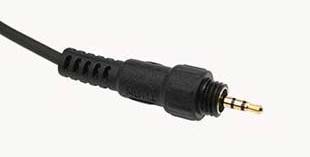
M10
Motorola Single Pin
Motorola:
CLP107, CLP117

M12
Motorola Multiple Pin
Motorola:
DP2000, DP2400, DP2600, DP3440, DP3441, XPR3300, XPR3500

MT1B
Motorola Single Pin
Motorola:
MTP850, MTH500, MTH650, MTH800

Y2
Vertex Single Pin Right Angle
3.5mm With Screws
Vertex:
VX-160, VX-180, VX-210, VX-210A, VX-231, VX-351, VX-410, VX-420, VX-426, VX-451, VX-454, VX-459, EVX-531

Y6
Vertex Multiple Pin Right Angle
Vertex:
VX-820, VX-821, VX-824, VX-829, VX-920, VX-921, VX-929, VXD-720

D1
Delta Two Pin Right Angle
Delta:
Pro16, 16L, 200B, 200K

D3
Delta Two Pin Right Angle
3.5mm Stereo + 2.5mm Mono
Delta:
AS300, AS310, AS320

D7
Delta Multiple Pin Right Angle
Delta:
DS400, DS410, DS420

S1
Icom, GME, Vertex Two Pin Straight
3.5mm Mono + 2.5mm Mono
Icom:
IC-F3, IC-F3S, IC-F4, IC-F10, IC-40S, IC-F20, IC-H2, IC-H6, IC-J12, IC-M5, IC-U12, IC-U16, IC-36FI
GME:
TX610, TX6000, TX7000, TX655
Vertex:
VX-200, VX-500, VX-510, VX-520UD
Cobra, Ritron

S2
Icom Two Pin Right Angle
3.5mm Mono + 2.5mm Stereo
Icom:
IC-F3G, IC-F3GS, IX-G3GT, IC-F4G, IC-F4GS, IC-F4GT, IC-F43GS, IC-F43GT, IC-F43TR, IC-F11, IC-F11S, IC-F21, IC-F21S, IC-F31, IC-A24

S3
Icom Two Pin Right Angle
3.5mm Mono + 2.5mm Stereo
Icom:
IC-F3G, IC-F3GS, IC-F4G, IC-F4GS, IC-F11, IC-F21, IC-F31, IC-F33, IC-F43, IC-F14, IC-F24, IC-F3023, IC-F4023, IC-41S, IC-41W, IC-41Pro, IC-F3003, IC-F4003, IC-F3130D, IC-4140D

S4
Icom Multiple Pin Right Angle
Icom:
IC-F50, IC-F51, IC-F60, IC-F61, IC-F30G, IC-F30GT, IC-F30GS, IC-F31GS, IC-F31GT, IC-36FI, IC-F40G, IC-F40GS, IC-F40GT, IC-35FIM87/88, IC-F3163, IC-F4163, IC-F3163D, IC-F4163D

SC1
Simoco Two Pin Right Angle
5mm Stereo + 2.5mm Stereo
Simoco:
SRP9120 SRP9130

H1
Hytera Two Pin Right Angle
3.5mm Mono + 2.5mm Mono
Hytera:
HYTS2100, TC500, TC600, TC2100, TC446, TC700, TC610, TC620

H2
Hytera Multiple Pin Right Angle
Hytera:
PD702, PD782, PD780, PT580, PD780G

H3
Hytera Two Pin Right Angle
Hytera:
TC700, TC610, TC620, PD500 Series
H5
Hytera Multiple Pin Right Angle
Hytera:
PD600 Series, X1E, X1P, TC380M, TC370M, TC780M, TC780, TC3000, TC610P
ATEX, UL & IECEx Guide
Please note that Radio Industries Australia Pty Ltd does not classify or take responsibility for the Hazardous Location Settings mentioned in this page, this is just a guide. Please consult your Safety Department for your exact Hazardous Location requirements.
What is Intrinsically Safe?
Intrinsically safe is a term used to describe a collection of devices and equipment that meet the requirements set out by the certification body (ATEX, UL or IECEx) to determine that device or equipment’s safety when used in a hazardous environment.
What is a Hazardous Environment?
A Hazardous Environment is an area where fumes, dust, gas or vapour may cause a fire or explosion when an ignition source is used in the area. For example, you may see a ‘No Naked Flames’ sign in your petrol station when filling up your car, this is because the area is classed as a Hazardous Environment. People who use devices like Two-Way Radios in these environments need to ensure that the device itself complies with the standard set for that particular zone. Often a safety officer will have this information to hand and be able to direct you as to what type of equipment you need for different areas of your plant.
What is the difference between ATEX, UL and IECEx?
The difference between these three is the testing/classification body.
Each rating is created by a recognised standards body with ATEX Being European, UL being American and IECEx often used for international standards. Your company may choose a specific standard to base decisions from.
ATEX Explained
Download the CML ATEX/IECEx Guide HERE - https://www.cmlex.com/wp-content/uploads/hazardous-area-guide.pdf
An ATEX Label will tell you exactly where the equipment can be used based on the Equipment classification and Zones specified. All of the numbers and letters on the label correspond to the level of protection offered and in what environments the equipment can be used. Please consult your safety supervisor for the correct equipment class you require based on the zones you are subject to.
ATEX Equipment is classified by Group, Type of protection, Gas/Dust Group, Temperature class and equipment protection level.
Areas where ATEX must be used is classified by Zones. Each Zone is for a particular Hazardous Environment. Each Zone is explained below. You will then need to use equipment suitable and certified for use the Zone.
ATEX Zones
Combustible Gas & Vapour
| Gas Zone | Description | ATEX Category | EPL | Required Protection |
| Methane | Mines with methane and dust. Equipment remains energised in explosive atmosphere. | M1 | Ma | Two Faults |
| Methane | Mines with methane and dust. Equipment is de-energised in explosive atmosphere. | M2 | Mb | Severe Normal Operation |
| Zone 0 | A place in which an explosive atmosphere consisting of a mixture with air of dangerous substances in the form of gas, vapor or mist is present continuously or for long periods or frequently. | 1G | Ga | Two Faults |
| Zone 1 | A place in which an explosive atmosphere consisting of a mixture with air of dangerous substances in the form of gas, vapor or mist is likely to occur in normal operation occasionally. | 2G | Gb | One Fault |
| Zone 2 | A place in which an explosive atmosphere consisting of a mixture with air of dangerous substances in the form of gas, vapor or mist is not likely to occur in normal operation but, if it does occur, will persist for a short period only. | 3G | Gc | Normal Operation |
Combustible Dust & Fibres
| Dust Zone | Description | ATEX Category | EPL | Required Protection |
| Zone 20 | A place in which an explosive atmosphere in the form of a cloud of combustible dust in air is present continuously, or for long periods or frequently. | 1D | Da | Two Faults |
| Zone 21 | A place in which an explosive atmosphere in the form of a cloud of combustible dust in air is likely to occur in normal operation occasionally. | 2D | Db | One Fault |
| Zone 22 | A place in which an explosive atmosphere in the form of a cloud of combustible dust in air is not likely to occur in normal operation but, if it does occur, will persist for a short period only. | 3D | Dc | Normal Operation |
Equipment Groups
| Equipment Group | Description |
| Group I |
Electrical equipment intender for use in mines susceptible to fire damp |
| Group II | A place in which an explosive atmosphere in the form of a cloud of combustible dust in air is likely to occur in normal operation occasionally. |
| Group III | Electrical equipment intended for use in explosive dust atmospheres |
IECEx Explained
IECEx is very similar to ATEX however some of the definitions for the protection offered do differ so keep that in mind.
Download the CML ATEX/IECEx Guide HERE - https://www.cmlex.com/wp-content/uploads/hazardous-area-guide.pdf
UL Explained
UL is classified by Divisions and Classes. The classes define the substance whilst the Division defines the operating conditions. The classes are also split into subgroups to determine specific and/or equivalent substances.
Classes
-
Class I – Flammable Gases, Vapours or Liquids
-
Group A - Acetylene and equivalent gas groups
-
Group B - Hydrogen and equivalent gas groups
-
Group C - Ethylene and equivalent gas groups
-
Group D - Methane, and equivalent gas groups
-
-
Class II – Combustible Dust
-
Group E - Conductive dust (mechanical – factories, recyclers)
-
Group F - Combustible carbon dust (charcoal & coke dust) - above ground only
-
Group G - Grain dust
-
- Class III – Ignitable Fibres and Flyings (No Subgroups)
Divisions
Division 1 - Locations where ignitable gas/vapor/liquid/dust are present continuously or some of the time under normal operating conditions.
Division 2 - Locations where ignitable gas/vapor/liquid/dust are not likely to exist under normal operating conditions.
Based on the above a rating of ‘Class I, Div 1, Group C, D’ would be given to an environment where Ethylene and Methane are expected to be present continuously
Why Choose Us?
Radio Industries is one of Australia’s longest-running Two Way Radio Communications Companies, operating since 1985. We are Dealers and Distributors of Quality Digital & Analogue Two-Way Radio Systems, and Hearing Protection Equipment.
What Our Customers Think
“Good experience. Product arrived in 2 days, sent express and completely as advertised. Called at one stage about shipping and they were easy to deal with. Happy with the product quality. Would recommend as easy to speak to someone if you have any questions. Great that they request your radio type too to make sure you’re buying the right connection. Thanks guys!”
John Johnson
“Thank you for your assistance with this matter, the whole process from the ‘chat’ onward through invoicing and payment, has been simple and fast. A pleasure to deal with you and your company. Well done from a business perspective, even for an out of the blue approach regarding a relatively minor order.
Regards, and again, thank you for your help.”
Michael Hayes
“Jim and Jacob sorted our order efficiently and quickly. We had our radios here and ready to use 5 days after payment was made. Very impressed with the professionalism of both employees and they really helped us out because we were looking for units that were in high demand and low in stock.”
Tarah Ferguson
Frequently Asked Questions
How Far Can I Get?
Two-Way Radios work on line of sight.
What Channels Can I Use?
CB or Private frequency.
Which Radio Is Best?
There is no definitive answer as there are too many radios to choose from, they work on different systems, contact us for a quote.
Do I Need A Private Frequency?
If you are using your radios on a crane then a private frequency is required in order to comply with OH&S.
If you will be using radios for safety reasons then a private frequency is recommended in order to prevent unnecessary outside interference that can easily be caused with standard UHF CB radios.
What is the difference between a Two-Way Radio, Walkie Talkie and Handy Talkie
Nothing, they all refer to the same piece of equipment however a Two-Way Radio is the preferred terminology in industry. Walkie Talkies and Handy Talkies often refer to toys or recreational two-way radios.


